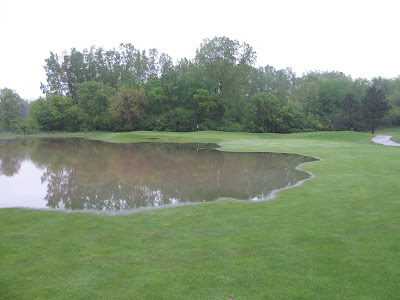Annual bluegrass (
Poa annua) is more commonly known as poa, even though one of the most important turfgrasses shares the same genus name (Kentucky bluegrass (
Poa pratensis.) Poa is considered a weed by many turf managers due to many factors such as its shallow root system, tendency to die during heat, drought or cold stress and the fact that it is not a grass that is planted on purpose. Most of this stem from poa being a summer annual.
Under normal circumstances, poa germinates in the spring, grows like crazy and dies in the winter. On golf courses throughout the country, it has been so well taken care of, that it will live several years until things get really bad.
Then it will die. This usually happens in the heat of summer, but will also happen during really cold or icy winters.
To make a long story short, bentgrass is better adapted to survive on a putting green at the extreme stress periods but poa out-competes the bentgrass during normal weather. If I could get the poa out of my greens, I would. Instead, turf managers have developed strategies for maintaining the poa at times when the poa would normally die.
Also, being an annual, poa makes a lot of seed. This seed is viable at a very early stage and can persist at very low mowing heights. This can be a problem on greens where we are striving for the smoothest surface possible. Right now is the time of year when poa is producing most of it's seed. Here are a couple of pictures of the seed on a fairway.
The light yellow-green spots are poa seed heads.
A close-up shot.
Using Michigan State University's
Growing Degree Days Tracker, I used a plant growth regulator called Embark to stop some of the production of the seed on the greens. This is the first time I have tried this and am hopeful that we see an 80 to 90% reduction of seed heads.
Odds and ends.
Here are some picture I have taken in the two weeks since I last wrote an entry.






















